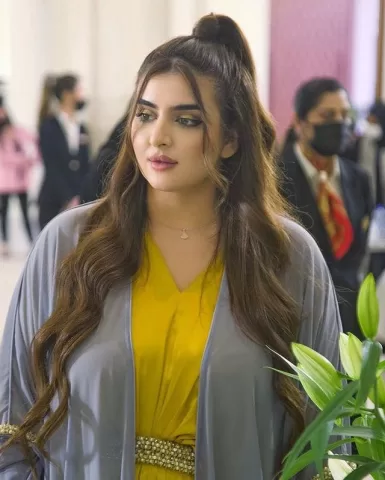In the glittering world of royalty, few moments shine as brightly as a royal wedding. When Sheikha Mahra, daughter of Dubai’s visionary ruler Sheikh Mohammed bin Rashid Al Maktoum, tied the knot with Sheikh Mana bin Mohammed Al Maktoum, the world witnessed not just the union of two noble hearts, but a celebration that blended deep-rooted tradition with modern charm. Her barat ceremony, while rooted in the cultural elegance of Emirati customs, was also a symbol of changing times—where royal women embrace both tradition and empowerment.

Sheikha Mahra has always stood out. An equestrian, a public speaker, and an advocate for youth, she represents the new face of Emirati royalty—confident, compassionate, and culturally conscious. Her barat reflected this very essence: regal in presentation but personal in emotion. From the attire to the ambience, every detail was thoughtfully chosen to reflect a deeper meaning.
Unlike typical barat ceremonies known in South Asian cultures—where the groom travels in a grand procession to the bride’s home—this version was uniquely Emirati in essence. The ceremonial arrival of Sheikh Mana was marked by a convoy of luxury cars and traditional horsemen. Dressed in his pristine white kandura with a bisht of royal black and gold, Sheikh Mana embodied the grace and humility expected of Emirati leadership.
Guests were welcomed with Arabic coffee, dates, and the fragrance of oud—setting the tone for an experience of refinement and heritage. Inside the venue, a combination of marble, gold leaf, and deep red florals brought life to the royal interiors. The wedding stage, known as the kosha, was crafted with the finest velvet, surrounded by golden motifs and cascading chandeliers. It was less about extravagance and more about elegance.
When Sheikha Mahra made her entrance, time seemed to pause. Wearing a gown that seamlessly merged modesty with majesty, she walked with grace and purpose. Her dress was hand-embroidered by regional artisans using traditional Arabic patterns, with subtle nods to Islamic art. Her jewelry bore historical significance—some pieces passed down through generations of royal women. Even her veil, embroidered with Quranic verses and poetry, told a story of identity and devotion.
The ceremony itself was quiet yet meaningful. Unlike Western weddings with open vows and kisses, Emirati marriages focus on the nikah—a spiritual contract rooted in Islamic tradition. The couple signed the contract in the presence of elders and a religious scholar, followed by heartfelt blessings from family and community leaders. Once official, the air filled with the sounds of the mizmar and traditional clapping songs, celebrating their union.
One particularly emotional moment came when Sheikha Mahra was seen whispering words to her father, Sheikh Mohammed. A known poet, Sheikh Mohammed’s eyes brimmed with pride as he held his daughter’s hand—perhaps remembering the little girl he once taught to ride horses now becoming a bride.
The celebration also included recitations of nabati poetry—a form of Bedouin verse that celebrates love, honor, and heritage. Accompanied by live instrumentalists playing the oud and qanun, these performances served as a bridge between generations.
Culinary offerings reflected the global identity of the UAE. While traditional Emirati dishes like thareed and majboos were served, so too were international favorites. Dessert tables brimmed with gold-leafed sweets, saffron puddings, and Arabic confections. Every guest was treated like royalty, in line with Emirati hospitality customs.
Sheikha Mahra’s barat wasn’t just about ceremony—it was a statement. In an age where fast trends and social media influence dominate, the event was a celebration of substance. It honored ancestors while empowering a new generation. Many young Emirati women saw in her an example—someone who honors tradition but lives on her own terms.
In the days following the barat, the ceremony trended across digital platforms. Photos of the bride’s ensemble, her calm demeanor, and the respectful yet joyous atmosphere captured the imagination of millions. While privacy was respected, official images shared through royal channels offered glimpses into a fairytale brought to life.
Ultimately, Sheikha Mahra’s barat was more than a royal wedding—it was a cultural moment. It reminded the Arab world of the importance of family, legacy, and identity, especially at a time when many traditions face the risk of fading. It also reminded the world that in Dubai, royalty is not only about luxury—it is about leadership, values, and the timeless power of love.
